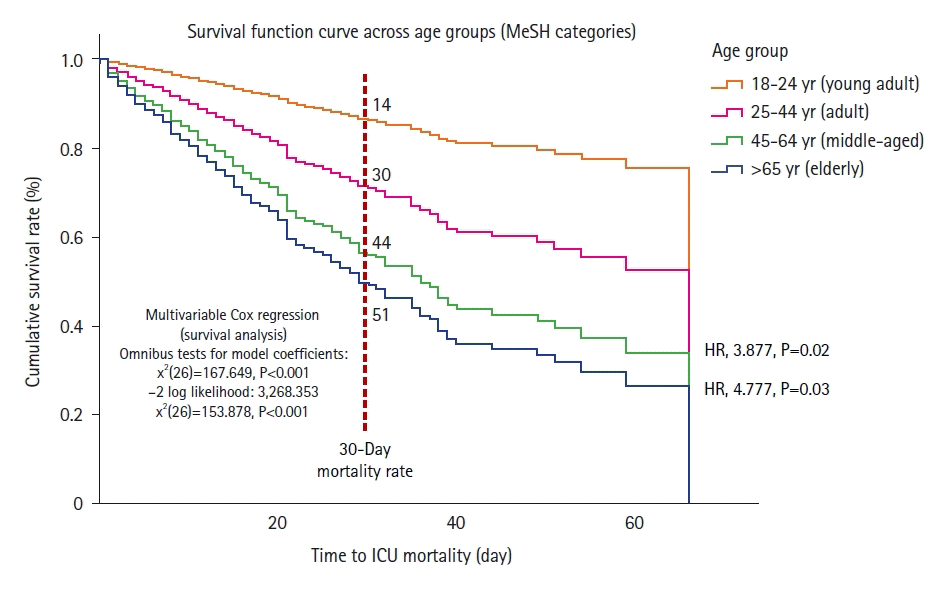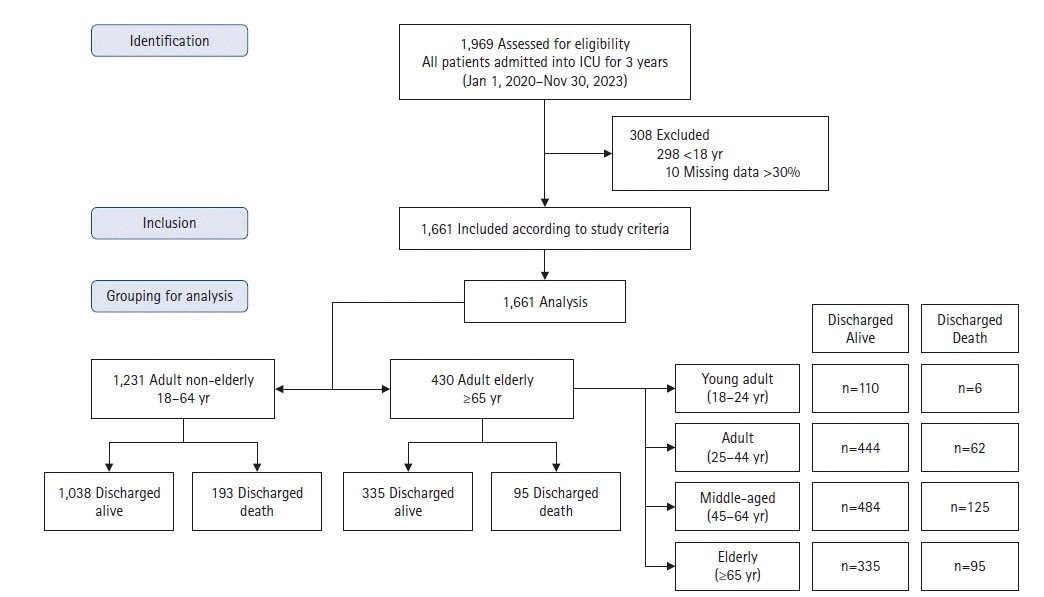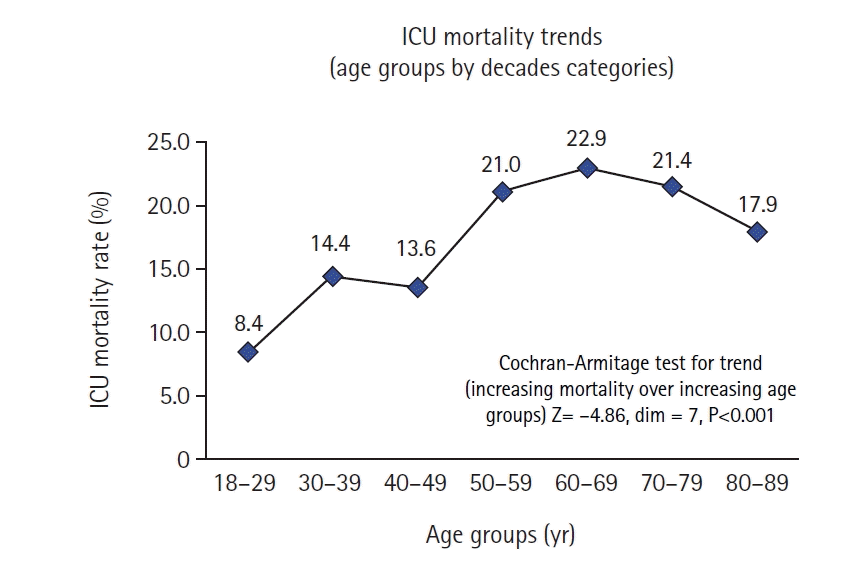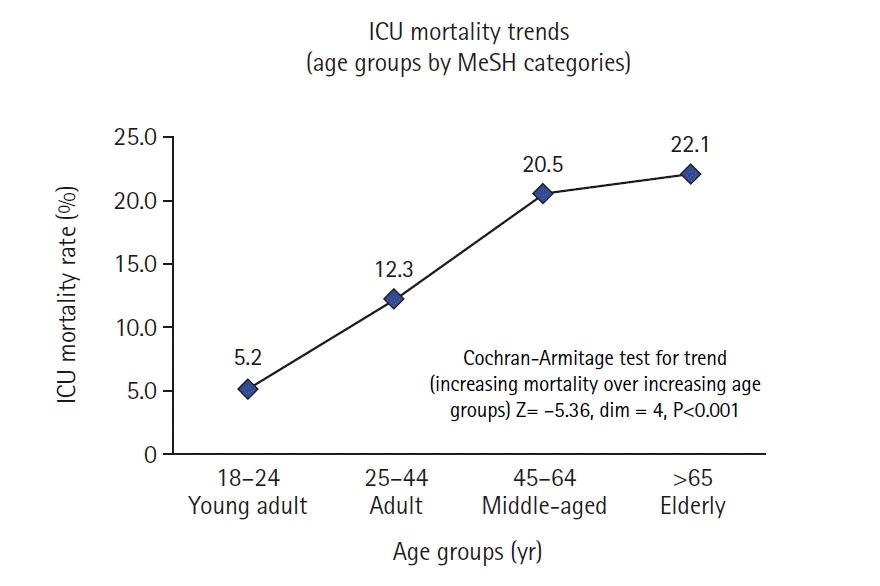Abstract
Background
Methods
Results
Notes
FUNDING
This research was partially funded by a grant from the Malaysian Ministry of Higher Education (FRGS/1/2020/SKK01/USM/03/1). The funders had no part in the study design, conduct, or data analyses and did not have any authority over these activities.
AUTHOR CONTRIBUTIONS
Conceptualization: AJI, MBMN, WFWMS. Data curation: MBMN, WFWMS. Formal analysis: AJI. Funding acquisition: WFWMS. Methodology: AJI, WMNWH. Project administration: WMNWH, MBMN, WFWMS. Visualization: AJI. Writing – original draft: AJI. Writing – review & editing: all authors. All authors read and agreed to the published version of the manuscript.
REFERENCES
Figure 4.

Table 1.
Values are presented as number (%) or mean±standard deviation. All variables were tested for statistical significance to predict outcome of ICU mortality individually using simple univariable Cox regression.
MeSH: Medical Subject Headings; ICU: intensive care unit; DKA: diabetic ketoacidosis; AKI: acute kidney injury; SOFA: Sequential Organ Failure Assessment; RRT: renal replacement therapy.
Table 2.
All variables were tested for statistical significance to predict outcome of ICU mortality individually using simple univariable cox. Regression, subsequently all predictors with P-value <0.05 were imputed into multivariable cox regression to adjust for confounders to generate adjusted hazard ratio for the most significant prediction of ICU mortality.
HR: hazard ratio; MeSH: Medical Subject Headings; ICU: intensive care unit; DKA: diabetic ketoacidosis; AKI: acute kidney injury; SOFA: Sequential Organ Failure Assessment; RRT: renal replacement therapy.




 PDF
PDF Citation
Citation Print
Print






 XML Download
XML Download